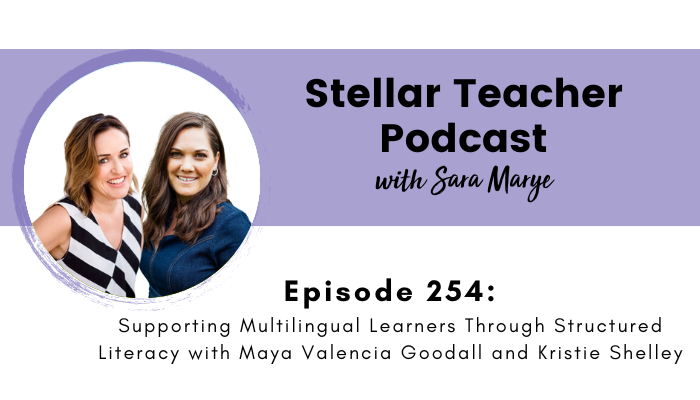
Click play below to listen to why we think boredom should be embraced.
Multilingual learners are a growing and vital part of today’s classrooms—but many teachers feel like they’re navigating this responsibility without enough support. In this episode, I’m joined by Maya Valencia Goodall and Kristie Shelley, two educators and advocates who are helping schools bridge the gap between structured literacy and language acquisition. Whether you’re new to working with multilingual learners or looking to refine your approach, this episode is filled with tips, tools, and encouragement to help you create a truly inclusive classroom.
We explore how teachers can better understand the process of language acquisition, why oral language is essential for reading success, and how teachers can build in meaningful support for multilingual learners without adding more to their to-do list. Maya and Kristie also share how small shifts—like increasing student talk time or using language frames—can lead to big gains for all learners.
Whether you’re new to supporting multilingual learners or looking to fine-tune your literacy instruction, this conversation will give you fresh ideas and renewed confidence. You’ll walk away with a better understanding of how structured literacy and language acquisition go hand in hand—and how to make sure all students, especially multilingual ones, feel seen, supported, and empowered in your classroom.
Meet Maya
Maya Valencia Goodall
Chief Strategy Officer, CORE Learning
Maya Valencia Goodall is a visionary entrepreneur in education who brings over two decades of expertise to the intersection of bilingual literacy, language acquisition, and educational technology. As co-creator of OL&LA (Online Language & Literacy Academy) at CORE Learning, her work focuses on ensuring spoken language is recognized as the foundation of effective literacy instruction for every learner.
As Structured Literacy gained traction, she recognized that it wasn’t always implemented in a way that accounted for the different ways language develops in language-diverse classrooms. To change this, she emphasized the critical role of spoken language in literacy instruction to help educators apply Structured Literacy effectively for Multilingual Learners, English variety speakers, students with dyslexia, and others.
Her expertise spans educational theory, LX design, and practical classroom application, with a focus on honoring students’ diverse language backgrounds and experiences.
Before CORE Learning, Maya co-founded Lingual Learning, a curriculum company committed to empowering students to become confidently bilingual. This venture was later acquired by Rosetta Stone/Lexia Learning, where she and her team developed the award-winning program, Lexia English, recognized for its innovative use of speech recognition technology and culturally relevant avatars with authentic accents to immerse students in English learning through conversation.
Maya’s academic background, including a Master of Arts in Education and a Master of Education in Applied Linguistics, laid the foundation for her work in developing research-based literacy solutions that meet the needs of all learners. Beyond her professional pursuits, she finds inspiration in fashion, travel, and time with her family.
Meet Kristie
Kristie Shelley
Chief Product Officer, CORE Learning
As Chief Product Officer, Kristie leads, develops, and implements the strategic vision for CORE Learning’s digital products. She brings over two decades of experience in publishing and educational technology.
At the heart of her expertise lies the seamless integration of cutting-edge tools and technology into product development and practical application. Her unique understanding of the industry landscape empowers her to make informed decisions, ensuring CORE remains at the forefront of innovation.
Before joining CORE, Kristie developed products for Multilingual Learners at Lexia and Lingual Learning, a company she co-founded and sold to Rosetta Stone. She also worked in multiple roles at McGraw Hill before building her own company.
Kristie’s educational roots trace back to her early career as a third-grade teacher in California, which provided her with firsthand experience and a deep appreciation for the impact of transformative learning experiences. Her passion for empowering learners and educators drives her to continuously push boundaries and create meaningful solutions.
Kristie received her Bachelor of Arts in education at San Diego State University and her Master of Education in curriculum and instructional design from the University of Phoenix.
In this episode on supporting multilingual learners, we share:
- Why oral language is a critical bridge between language acquisition and reading development
- How teachers can honor and leverage students’ home languages as background knowledge
- The role of structured literacy in meeting the needs of multilingual learners
- Practical ideas for increasing student talk time without overhauling your instruction
- How to use language frames and sentence stems to support academic conversations
- Simple shifts that help teachers meet the needs of multilingual learners without creating extra work
Resources:
- Join The Stellar Literacy Collective
- Sign up for my Private Podcast: Confident Writer Systems Series
- Sign up for my FREE Revision Made Easy email series
- If you’re enjoying this podcast, please leave a review on Apple Podcasts!
Related episodes and blog posts:
- Episode 241, The Secret to Expanding Students’ Vocabulary (Without More Word Lists!)
- Episode 210, How to Engage the Rest of Your Class So You Can Pull Small Groups
- Episode 87, Breaking Down the Elements of Language Comprehension (and Practical Implementation Ideas!)
Connect with me:
- Join my newsletter
- Shop my TPT store here
- Subscribe to our YouTube channel
- Instagram: @thestellarteachercompany
- Facebook: The Stellar Teacher Company
More About Stellar Teacher Podcast:
Welcome to the Stellar Teacher Podcast! We believe teaching literacy is a skill. It takes a lot of time, practice, and effort to be good at it. This podcast will show you how to level up your literacy instruction and make a massive impact on your students, all while having a little fun!
Your host, Sara Marye, is a literacy specialist passionate about helping elementary teachers around the world pass on their love of reading to their students. She has over a decade of experience working as a classroom teacher and school administrator. Sara has made it her mission to create high-quality, no-fluff resources and lesson ideas that are both meaningful and engaging for young readers.
Each week, Sara and her guests will share their knowledge, tips, and tricks so that you can feel confident in your ability to transform your students into life-long readers.
Tune in on your favorite podcast platform: Apple, Google, Amazon, Spotify, Castbox, and more! If you’re loving this podcast, please rate, review, and follow!
Podcast (stellar-teacher-podcast): Play in new window | Download
Sara Marye
Hi, Maya and Kristie. Welcome to the show. I am so excited to be chatting with you guys today.
Kristie Shelley
Hi, Sarah, thanks for having us.
Maya Goodall
Thanks for having us, so excited to be here.
Sara Marye
So I’m super excited to be chatting with you guys today because I know we’re gonna be talking a lot about structured literacy practices that can enhance learning outcomes for linguistically diverse classrooms. But before we get into that, I know that both of you guys began your careers as teachers and you’re no longer in the classroom, but how did starting your early career in the classroom really get you to the place where you are today?
Maya Goodall
Yes, I love that question. For me, that starts. I was a classroom teacher here in the United States in California. And at the time I was teaching both in English and in Spanish. And then Prop 227 passed, which was the English only law of California. There was this big debate about whether or not students could learn how to read, write, and speak in two languages at the same time.
So contentious that people were really unsure of that and decided no it’d be best if everyone learned English at you know just that language only. And then I left the country and I started teaching English as a foreign language. So although I was teaching only English then I was in this bilingual environment where the other teachers were teaching native languages of the country that I was in and they all knew that all of the students starting from preschool and above could learn how to read, write, and speak N2 languages at the same time. And instead of wondering about it, they just gave all of their time and attention to achieving that goal. So that changed the entire trajectory of the rest of my career.
Sara Marye
Yeah, I can imagine. I am not bilingual. I wish I was. But I early on in my career, I taught at a school that had students from just all over the world, and I would have students that were multilingual. And I was always so amazed that they were able to read and write and speak in two or three languages. And yeah, I’ve just always been so impressed with language acquisition and, you know, even teachers that are able to teach in two different languages. Kristi, what about you?
Kristie Shelley
Yes, so I have a very similar path as Maya. I was also a teacher in Southern California, though not the same area. I was in Orange County. And I would say everything that happened in those years shapes what I do today. I work on the product development side of our careers here. just number one, my students, all of my students were multilingual learners in my classroom.
And so that was huge. That has stayed with me in everything that Maya and I have built. And then when it comes to product development, just remembering what it was like to be a teacher. All the frustrations, all the things that were amazing, I never forget those. And anytime I build a product, I always go to teachers. So that has also stayed with me.
And I would say another thing that was really important during those years was my mindset, and really remembering why I’m there. And so that’s something that Maya and I always keep front and center in everything that we do, especially because we want to make sure that the multilingual, the language variety speaker, all the students are being taught in the way that will elevate them and help them, especially when it comes to reading, which is our focus right now.
Sara Marye
Yeah. And I, I know that teachers that have multilingual learners in their classrooms are looking for support because we often hear from teachers, they’re like, do you have any support for her? You multilingual students. and so I know that this is an area that teachers definitely need support with. Can you guys share a little bit more about how teachers really can positively frame language acquisition in the classroom?
Maya Goodall
Yeah, that’s a great question. And I think the very first thing to know and really understand is to do some research and find out about how students learn a second language. Or really more than that, that their brains are wired for it, which means that, you know, really having this deep understanding that the students are capable. In fact, all humans are capable of this. And I say that it’s such a simple thing, but
There’s been so much noise out there about whether or not it’s actually true. So it’s just number one to know that the cognitive benefits that the students bring as assets to the classroom. In teaching, we perfectly understand the gift of background knowledge, right? We understand that students bring background knowledge with them and that we’re trying to add on to their background knowledge with whatever content that we’re trying to teach. The same thing with language.
So the language that the students bring from home to school is their background knowledge. And there’s lots of ways that we can tap into their background knowledge. First, we can use data. So we’re gonna understand what our students know and what the next thing is that they need to learn. We’re gonna understand about their lived experience, know our students as human beings who have experiences at home, outside of school, et cetera. All of that matters in the classroom.
And then finally, really using the tools that are at our fingertips like AI to find out where things in English and the other language intersect so we can quickly find out all of the places where there’s cognates let’s say where there are sound correlations for letters and sounds that you know work together and all the different ways to do that cross-linguistic transfer.
In the past getting that type of information was so hard and you might have to do a lot of research. Now, you can pop that into chat GPT and ask it to give you a comparison and it will tell you all that you need to know about the languages that are spoken in your classroom so that you can just tap into that background knowledge and then teach the English which is what we’re responsible for. So those are my tips.
Sara Marye
Yeah, I love the reminder to teachers that AI is a tool that can really benefit us in this area. You know, because it’s like so many teachers are like, I don’t know, fill in the blank with whatever language they have students that speak in their classrooms. And it’s like, OK, you don’t have to know that. But you can utilize a tool like chat GPT to figure out where some of those, you know, crossover intersections exist, which just gives the teachers. think I think that would help teachers feel so much more empowered to try to support students that are, you know, trying to acquire English in their classrooms.
So how can teachers, what are maybe some of the specific things that teachers can really do to tailor their instruction to meet a diverse classroom setting while also enhancing learning outcomes? I feel like this is one of those things where teachers are always looking for maybe the practical strategies, like what are those things that they can do in their classroom, you know, to really make sure that their students are set up for success.
Kristie Shelley
Yes, always. It always comes back to what’s practical. We don’t have time to go reinvent the wheel. But I will say the most important thing is data, right? You have to make sure that you are using all of those data outcomes. And there are many. There are those spreadsheets that we can get and download, but there’s also the human data, making sure that we’re engaging with our students the way that we need to and getting the feedback from them. So we need to start with what they know and what they need to know. But then also we need to rely on the research that’s out there as well, as we know science of reading and how can we take structured literacy and language acquisition and marry it together to really support the students and getting the best outcome. So that data is where you start. But it’s really about intentionality and flexibility. know, teachers don’t need to start from scratch. I’m not saying anything new here.
But leverage what the students already know, their language, their culture, their interests. And Maya was speaking about this a minute ago. When you honor their identity, their engagement goes up and so do the outcomes. I mean, just by simply saying a child’s name, just by saying anyone’s name, it makes learning more meaningful. So you have those two ends of the spectrum. You have the data that you’re making sure that you’re acknowledging what they know and what they need to know. But then you’re also leveraging that human data and making sure that you’re tying that culture together. I know we have a lot to say about this. I’m gonna pass it to Maya, because I’m sure she will add more.
Sara Marye
I was gonna say before Maya takes over, I think that human data component is so important. And I think it’s so easy in education, right? We become so data driven and we’re always looking at numbers that we forget that we’re teaching human beings and we need to consider those relationships. And I love that reminder of like, okay, what can we bring in the human asset side of it, right? Like what can we bring in that our students contribute to the classroom?
Like I mentioned, that classroom that I taught in that had students from all over the world, anytime it was a student’s birthday, I asked my students who spoke another language, can they sing happy birthday in their language? And so my students all knew how to sing happy birthday in English and Spanish and Arabic and Mandarin. I think that was such an easy way for students to feel like, OK, my language and my culture is being validated while also, you know, helping them still develop their English skills as well. So those things are so important and yeah, cannot be overlooked. So I love that reminder that the human data piece is so important.
Maya Goodall
Yeah, and on the practical side, I’ll just add so that, you know, speaking practice, what we know about structured literacy and structured multiliteracy is the key bridge to learning how to read is oral language. And really having that opportunity for speaking, I think that the more we understand about the research and the way that the brain works and how we learn both language and then of course subsequently how to read, that it’s all interconnected.
Sometimes I hear from coaches or other administrators that teachers are afraid to take time to have the students engage in speaking practice because they think that it’s somehow different than learning how to read. And so just really understanding that all the time spent with the students actually producing language for themselves is going to net a return of student achievement that is just so high. All of that speaking practice will benefit the students deeply.
Sara Marye
Yeah, and I love that. I feel like oral language is something that gets prioritized really in the lower grades like in pre-k and kindergarten. Then we almost forget that big kids still need development in oral language as well. And so, yeah, again, it’s just like we need to make sure that we’re spending enough time letting our all students, even if they’re not multilingual students, but all students really benefit from the oral language practice.
So I think something that teachers often feel overwhelmed with, like even the example of you need to be spending more time with oral language in your classroom, that can feel like an extra thing for teachers. And I think oftentimes teachers feel like I don’t have enough time and I am spreading myself too thin. So what are some things that you feel like teachers can do to where they don’t feel like adding some of these things in or giving more emphasis to the things that we know benefit our multilingual students doesn’t become a burden to them. And they’re a lot easier for them to bring into their classroom.
Maya Goodall
So you kind of pinpointed exactly what I was trying to get at, which is this concept that allowing for speaking practices is somehow adding something more, when in fact it’s allowing something to happen. So it’s not adding something, it’s allowing for this opportunity to take place. In any lesson that you’re looking at, if you look at the objectives, whether it’s a math lesson, science lesson, art lesson, ELA especially, there are always objectives that you can see that will lend itself to being spoken about by the students between themselves in pairs, in groups, etc. The more time the students are actually speaking in class about the lesson, the more they’re learning. It’s still too often that I see teachers standing at the front of the classroom trying to keep the students engaged being as charismatic and as effervescent as is humanly possible. And the thing is, you don’t have to give that much effort. If you turn over the talking to the students themselves, they will be naturally engaged and they will be learning. You won’t have to fight so hard for their attention because their attention will be on the matter at hand.
So it’s not about adding something, it’s really about taking away, subtracting all of the time that the teacher is doing the talking and building in opportunities for spoken practice with the students among themselves. And there are strategies, I can hear the audience saying, well, what about my students who are early speakers of English? There are strategies and ways that we can talk about in terms of helping those students engage. But newcomers really, those are the least amount of your population. What we know about multilingual learners is the majority of them started school here in the United States in kindergarten. So the majority of your students actually do have quite a robust understanding of English and there are lots of strategies and ways to get them to do that speaking. So I’ll just restate for the third time, know, make sure that instead of thinking of this as adding something, why don’t you subtract something and allow your students to do the talking.
Use that iPhone to actually calculate how many minutes you’re speaking. You really want your lessons to be majority of your students speaking. So 60 % of your time, like let’s say you have a 30 minute block, 60 % of that should be your students speaking and 40 % should be the teacher speaking. That’s a whole paradigm shift. If you can start with that and you can find all kinds of ways where you can get your students engaged.
Sara Marye
I love that. And I wrote this down because I was like, if teachers take nothing else from this episode, especially when they’re thinking about oral language, we’re not adding something in, we’re allowing learning to take place. And I think like that is such a good mindset shift. I always had to tell my students, I was like, I’ve learned all of this. You guys haven’t. So you need to be doing most of the work. You should be doing most of the talking. You should be doing most of the writing. Like you guys need to do way more work in this lesson than I do. but Maya, would you be able to share maybe one or two of those strategies that teachers could actually use in their classroom to help increase oral language in their classroom?
Maya Goodall
Yeah, so first of all, you’re gonna start with your objective, whatever your lesson objective is, and then you’re gonna look at the language proficiency standards for your grade level and the different levels that you have in your classroom. So you’re gonna look to see what are the students being expected to speak about? Are they expected to use sentences with nouns and verbs? Are they expected to say yes, no? What are the language proficiency standards and what type of language?
Do the language proficiency standards offer and what is being asked in your content objective and how can I marry those two? So if I’m supposed to, the language objective is summarizing or retelling of a story, how can I do that with the metamorphosis of a frog? So I can marry those two things together and then from there I can build out supports for the students. Language frames, you can give them an entire sentence if that’s what they need, or you can start to take out some of the content words and leave them the grammar construction so that they have something to use. And then remember that the students, they are asking and answering questions among themselves. So you can either feed them with questions if you feel that their language is early enough, or you can allow them to ask and answer questions and then guide their attention to what kind of language they’re supposed to be using, and then of course the content. So it takes a little bit of pre-planning, but once you get in the habit of looking at what the students are supposed to be able to say and what content you’re talking about, that becomes a very easy thing. And I bet, I haven’t tried it, but I’m going to now that I’m bringing it up, I bet we could put it in ChatGPT and ChatGPT would give us some great suggestions on questions and answers that the students could have amongst themselves.
Sara Marye
For sure. But I love this reminder that providing students with a language frame or a sentence stem is something that supports multilingual students. I think so often teachers almost over complicate the process. Maybe because they don’t either have enough knowledge or support at their school, or they know they’re supposed to be supporting their multilingual students, but they’re like, how am I supposed to do it? I know so many teachers use sentence stems and sentence frames in their classrooms, probably being unaware that that is a strategy that supports their multilingual students.
Sara Marye
So can you guys tell us a little bit about Core Learning’s Online Learning and Literacy Academy? I know you have this program and it is also designed to really help teachers who are looking for multilingual resources. So can you share a little bit about how this is really helping teachers bring some of these strategies into their classroom?
Kristie Shelley
Absolutely. So the online language and literacy academy that has the nickname of OLA, isn’t that great? It’s perfect. Actually, what Maya was just addressing, language frames. We do teach the educators going through that course how to, what language frames are, how to use them in the classroom, how to make them transferable and portable, right? Teaching students a language frame that can be used in math and in social studies and in science.
Sara Marye
Love that.
Kristie Shelley
But so to be very specific and bring it back to what Maya was talking about, that is one thing that OLA does, but it does many more things. It is a nine module asynchronous online PD course. And we are taking structured literacy and centering the language diverse student. So that’s our multilingual learners, our dyslexic learners, our language writing speakers. So we are making students that typically are in the sidebars of our teachers guides, the center of their education. So throughout the course, it’s all sprinkled through. And in fact, probably one of the best comments that I saw at the end of the survey was, I thought there would be more about multilinguals in here. I only saw one, or maybe a few things about Spanish.
And I was like, that’s the point actually. The point is it’s everywhere and it just becomes the norm. And that was exactly the reason that we developed this course. There are a lot of wonderful resources out there for teachers to learn about the science of reading and to understand the best practices and research that goes behind structured literacy.
Sara Marye
Yeah. Yeah. The norm.
Kristie Shelley
But there was nothing out there that really helped teachers understand the value of centering the multilingual language variety speaker and bringing in language acquisition to the whole, cut that part out, to bring in language acquisition to the game because it really is something that unfortunately, the universities and colleges aren’t really emphasizing it in their courses. So we wanted to make sure that teachers had that as a part of their learning. We’ve had over 12,000 teachers go through it already, and it’s only been out for a year. By the end of the summer, we’ll have over 15,000 teachers going through it. And it’s just been amazing. They’re learning a lot, but they’re also learning how to apply all the wonderful things that they already know. And just like we do as teachers, we wanna make sure that we are honoring what our students know. We do the same in this course. We always start off, know, tell us what you already know.
We have live sessions so that they can talk about it together. We have wonderful activities where they have to go and look at their literacy curriculum and actually apply what they’re learning and really dissect it. So there’s a lot of places that we’re kind of bringing in that language acquisition where they might not normally do it. So it’s really important to us that, you know, every time the teachers are in there, they’re learning something that they can take into the classroom with them.
Sara Marye
I love how you said, you’re taking the student groups that are usually in the sidebars of the literacy curriculum, the teachers manuals, right? Like this is how you differentiate. This is how you reach those students and making them front and center. And, you know, I taught for however many years in the classroom and taught in schools that had large multilingual student populations and received very little support, right? So it’s like, OK, I’m supposed to be helping these students. I have no idea. I have no strategies. I have no tools and my curriculum is not helping me at all. So I am so grateful that you guys are doing the work to, you know, take the structured literacy practices and figure out how they apply to these very important student population so that way they can get access to, you know, the education that they deserve as well.
As we wrap up, I always love to ask for advice, right? So what advice would you give to teachers if they are seeking out more support from their schools? They have the multilingual students and they do not necessarily feel like they have the support or the resources. What advice would you give to those teachers?
Kristie Shelley
First and foremost, I would say don’t be afraid to advocate for yourself and your students. Sometimes you do have to shout a little bit louder. There’s nothing wrong with that. Be kind to yourself as well. I think sometimes we beat ourselves up like, I did that wrong with this group of students last year. You know, don’t beat yourself up over it. We’re always learning. We’re always growing. Take care of yourself. That’s so very important.
Sara Marye
There’s nothing wrong with that.
Kristie Shelley
And as Maya said, remember that supporting multilingual learners and language variety speakers is not extra work.
Sara Marye (23:30.144)
Yeah, yeah, that’s a good reminder.
Thank you. Thank you both for doing the work to support teachers in this area. And thank you for coming on today to just share your knowledge and experience with my audience. If teachers who are listening want to connect with you and learn more about how you’re supporting teachers, where can they find you on the internet? Where’s the best place to connect with you guys?
Kristie Shelley
We’re both on LinkedIn, so you can find us both there. And you can also go to corelearn.com and you will be able to find out more information about OLA. We have a secondary version coming out very soon for our upper teachers. So that would be perfect for your audience.
Sara Marye
Awesome. We will definitely link to that in the show notes. And again, thank you ladies for coming on today.
Kristie Shelley
Thanks for having us.



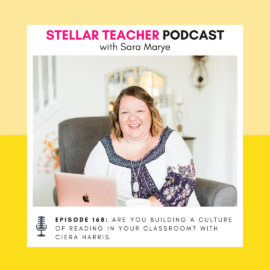
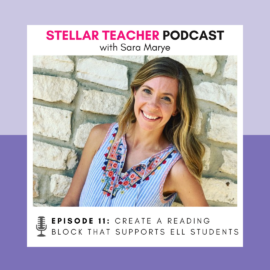
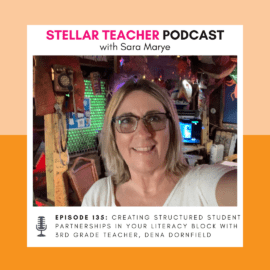
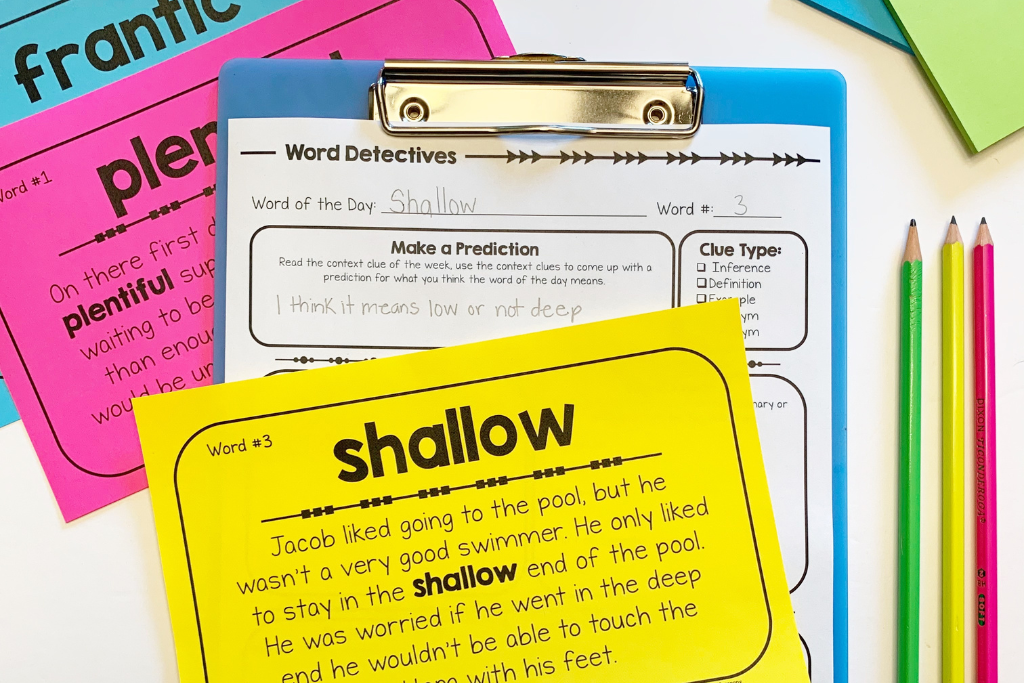

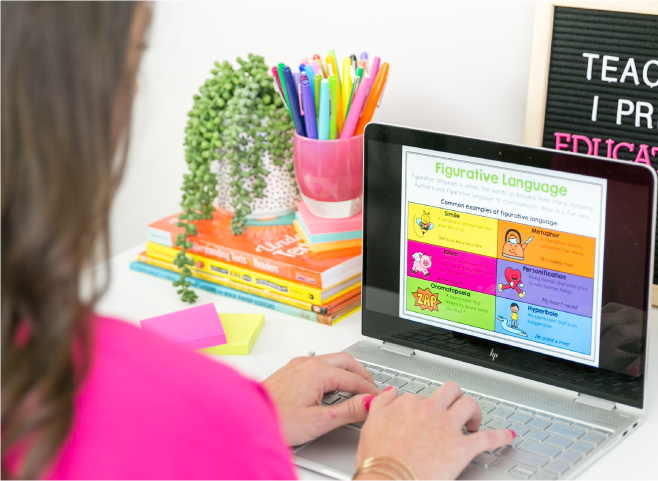
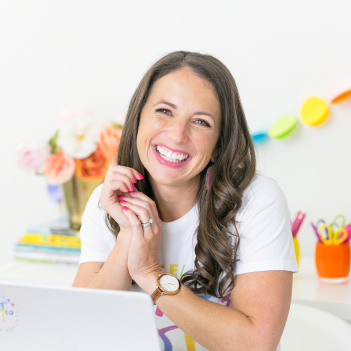
Leave a Comment
You must be logged in to post a comment.